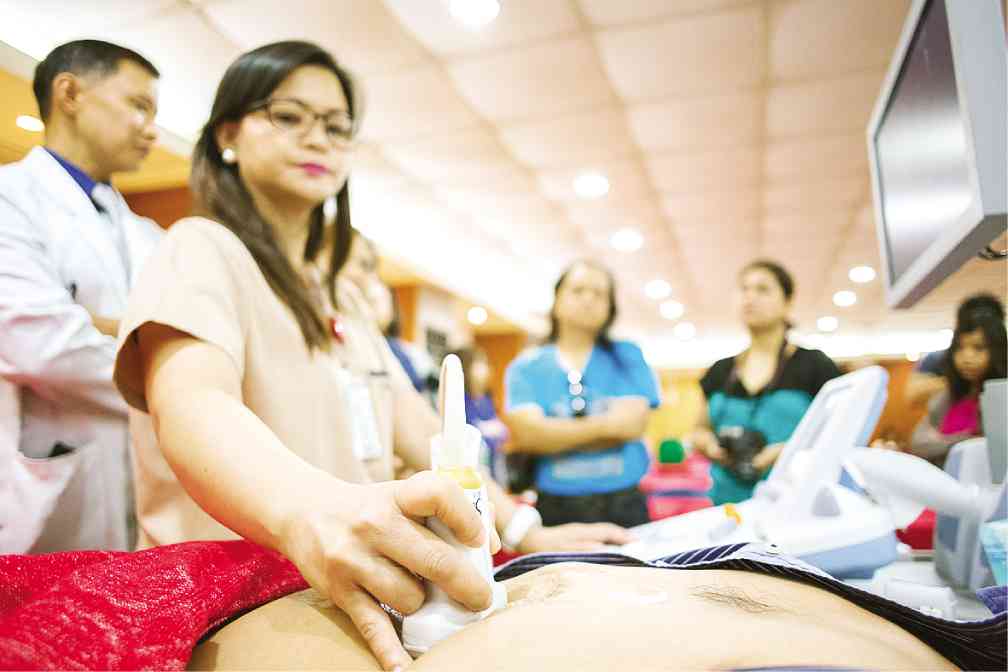These “silent killers” need to be unmasked, and early on.
More and more Filipinos are at risk for aortic aneurysm, which is a localized bulging or ballooning of a weakened area of the major blood vessel (aorta), even as awareness on them remains low.
Often mistaken for being heart failure or heart attack, aortic aneurysm has a very high fatality rate upon rupture. Those who had stroke or heart attack have a better chance to survive, while those with burst aneurysm are more likely to die, said Dr. Melissa Co-Sia, an interventional cardiologist at the Chinese General Hospital and Medical Center’s Heart Institute, with nearly 80 percent of all aneurysm patients dying, added Dr. Nelson Lee, a thoracic and cardiovascular surgeon who heads the cardiovascular surgery division of CGHMC.
Prevention still the best
“Patients rarely meet us until it is too late, when we can’t do much to stem the tide,” said Dr. Timothy Dy, an interventional cardiologist who heads the hospital’s aortic endovascular unit.
Prevention is still the best, as aneurysm that is still small can be addressed with monitoring, medication and an overall healthy lifestyle, Dy said. Lee added that they are emphasizing early detection. “We want to intervene when the bulging is still not that large.”
Thus, these doctors are pushing to have more people screened for aortic aneurysm, especially those at risk. People who have high blood pressure, high level of cholesterol, existing clogged arteries and a family history of cardiovascular disease, should be screened while they are still in their 30s or 40s, Lee said. Smokers, and those with a sedentary lifestyle and are obese, are also at high risk for aortic aneurysms, Dy added.
Aortic aneurysm develops when the wall of the aorta, the large artery that carries blood from the heart through the chest and torso, deteriorates and weakens due to deposits of cholesterol, and then the aorta enlarges and becomes thinner, making it more vulnerable to rupture. It can develop quietly and slowly over many years, usually without symptoms, until it leaks or expands and, without warning, ruptures.
There are two kinds: abdominal aortic aneurysm, which occurs in the abdominal area, and thoracic aortic aneurysm, which occurs in the chest area.
Thoracic aortic aneurysm can occur when the aorta at the heart exceeds 5 centimeters in diameter, with risk increasing as it expands more. Symptoms can be vague and confused with chest, back, or abdominal pain. It can be determined using chest X-ray examination or through a CT angiography (CT scan).
Meanwhile, abdominal aortic aneurysm occurs when the abdominal aorta expands by more than 7 cm. It almost has symptoms, according to Co-Sia, with the US Centers for Disease Control and Prevention listing only throbbing or deep pain at the back or side, or pain at the buttocks, groin or legs as probable signs. Abdominal aortic aneurysm can be detected using an ultrasound scan.
Advances in medical science have enabled doctors to treat aneurysm through minimally invasive procedures, said Co-Sia. CGHMC is one of the first and still few hospitals in the country that offers endovascular aneurysm repair for abdominal aortic aneurysm, and thoracic endovascular aortic repair for thoracic aortic aneurysm. Both uses a stent graft—a fabric tube lined with a metal frame—that serves as the new pathway for blood to flow in the afflicted area. Patients are discharged quickly and would have up to four to six weeks to recover, over open surgical repair, which presents an increased chance of complications and longer recovery period.


